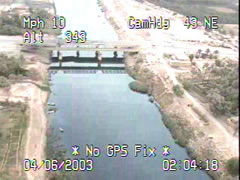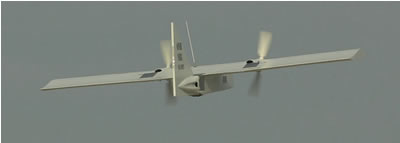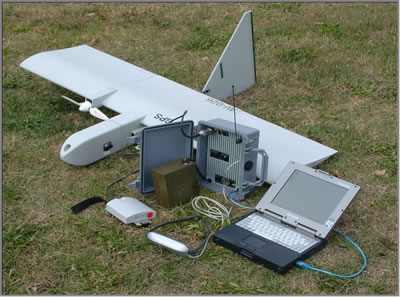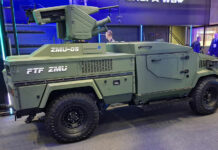 Dragon Eye is a five-pound, back-packable, modular unmanned aerial vehicle (UAV) providing organic aerial reconnaissance and surveillance for the US Marine Corps at low tactical units levels. Dragon Eye’s twin electric engines run quietly on battery power. It is flown autonomously at an altitude of 150m’. The total weight of the Dragon Eye is 2.5 kg, of the payload (camera and equipment) weighs 1 pound. The US Marines Corps are planning to procure an enhanced version of Dragon-Eye, known as model X-63.
Dragon Eye is a five-pound, back-packable, modular unmanned aerial vehicle (UAV) providing organic aerial reconnaissance and surveillance for the US Marine Corps at low tactical units levels. Dragon Eye’s twin electric engines run quietly on battery power. It is flown autonomously at an altitude of 150m’. The total weight of the Dragon Eye is 2.5 kg, of the payload (camera and equipment) weighs 1 pound. The US Marines Corps are planning to procure an enhanced version of Dragon-Eye, known as model X-63.
The system is carried in a standard backpack, disassembled into five sections and carried with the 5 kg control station. Prior to the mission it is quickly assembled in the field within ten minutes. Dragon Eye is made of lightweight Styrofoam-like materials. It has a 18 cm wingspan once assembled and weighs about five pounds. The missions is programmed on the control station and transmitted to the UAV via wireless modem. The UAV is launched by a bungee cord or by hand. After launch it climbs to the cruise altitude and sweeps through the pre-assigned waypoints, navigating via GPS. The fuselage mounted side looking sensor comprises of a low-light b/w camera, capable of transmitting live video to the ground station from a distance of 10 km, via line-of-sight video datalink. Operator’s training requires less than a week for soldiers to be able to operate them.
A Dragon Eye system consists of two air vehicles, four cameras, two replacement noses and one ground control station. The target cost at full rate production is approximately $60,000-70,000 per system. Aero Vironment has won the competition to supply the 342 Dragon Eye systems to the USMC from 2004 through 2006. The system is expected to field with initially at battalion and company level and further reach down to the platoon.
The Dragon Eye is undergoing further development with testing of a high-resolution 640 x 480 infrared camera, development of a communications relay payload, an integrated communications system, and introduction of experimentation with alternate power supplies and air vehicle design to improve endurance. A prototype zinc-air battery developed by Arotech Corp’s Electric Fuel subsidiary has already been tested with the Dragon Eye unmanned drone.
An enhanced version is currently under development at Aerovironment based on requirements and operational feedback from combat units operating the drone. The Dragon Eye UAV Block Upgrade, also known as X-63 will get air frame modifications and improved power sources increasing its loitering capability. It will have an autopilot for improved landing accuracy and in-flight navigation, and a new sensor payload with an IR and zoom camera that will providing true day/night capability. The system will have a new Level-4 compliant communications control board with 16 software selectable channels for uplink and downlink, twice the current capacity.
-
Air vehicle: 2.5 kg
-
Wing span: 18 cm
-
GCS – 6 kg
-
Endurance: 60 minutes
-
Cruise speed: 65 km/h


















